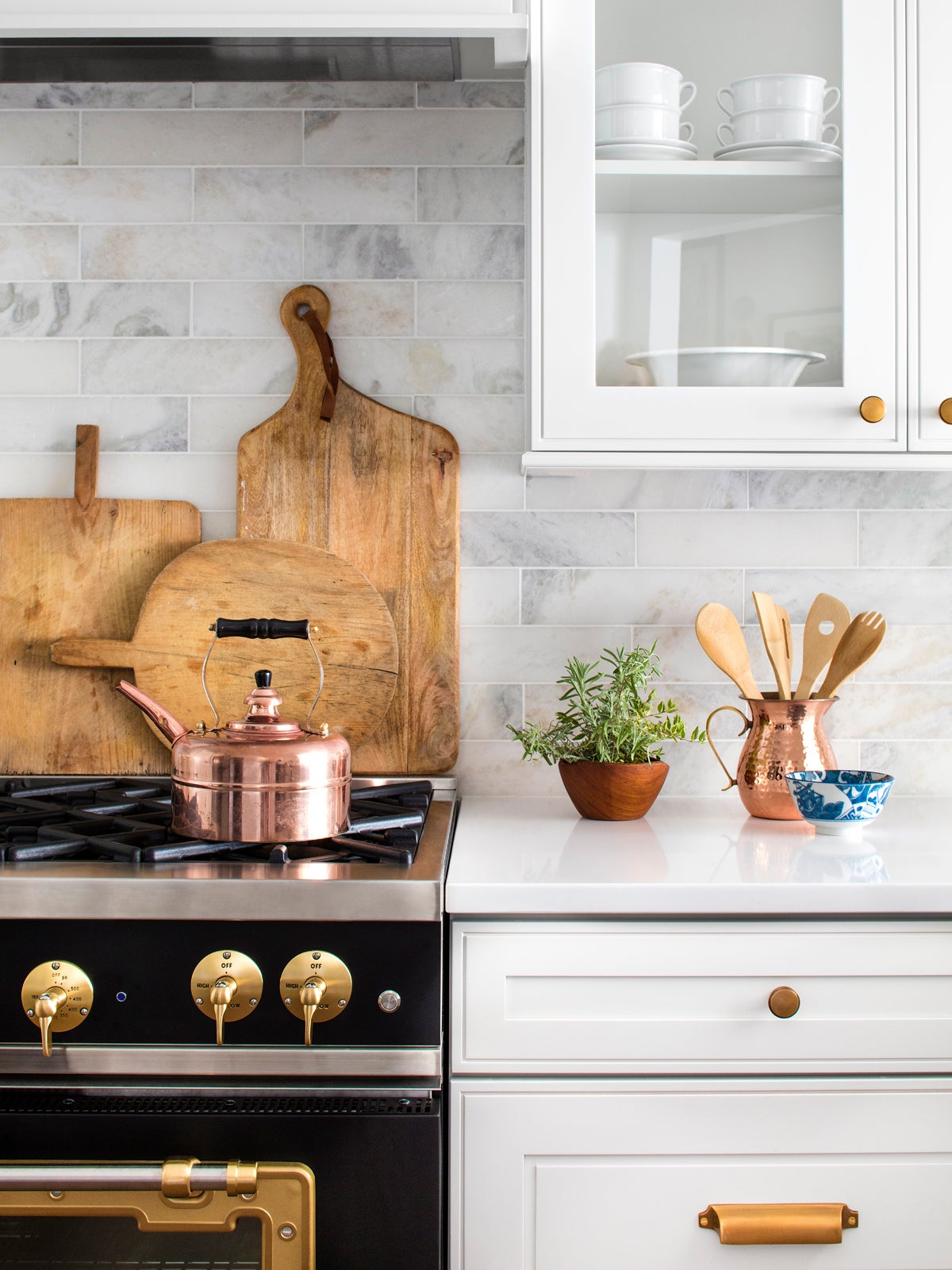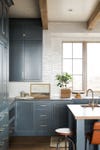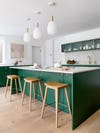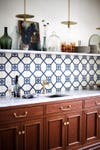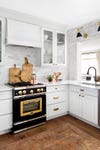6 Kitchen Cabinet Options That Stack a Lot of Style
Bookmark for your future remodel.
Updated Oct 11, 2018 11:20 AM
We may earn revenue from the products available on this page and participate in affiliate programs.
While marble countertops telegraph old-world elegance and a super-sculptural pendant lamp can make a space instantly cool, there’s one element that steers the whole design direction of your kitchen: the cabinetry. And because it takes up the most visual and physical real estate, not surprisingly it’s often the single most expensive item in a remodel, eating up 30 to 50 percent of most budgets. Such a big-ticket item needs to be functional, well made, and good-looking. But with so many options, how do you choose the right one for you?
According to interior designer Alison Giese, it all comes down to personal style: “There’s a lot out there selection-wise, so if you know your taste is traditional or rustic, then you can at least eliminate certain door types.” And while it’s important to keep in mind the architecture and period of your house, those things don’t have to dictate your cabinet choice. “I wouldn’t recommend doing something that feels totally incongruent with your surroundings, though I have seen homes with traditional millwork and very modern kitchens, and there’s a yin-yang to it that works,” she says.
Because this essential feature has the power to impact your whole space, we assembled a cheat sheet of some of the most popular looks. Here are six to consider.
Shaker
With clean lines, minimal detailing, and utilitarian design, this type of cabinetry has been trending for several years. “It’s definitely the MVP,” says Giese. “You can put more classic hardware on it and it becomes traditional, or you can put a contemporary pull on it to make it work in a more modern setting.” A staple of transitional kitchens, humble Shaker designs are easy to spot: Doors feature a recessed flat panel surrounded by rails and stiles (the vertical and horizontal trim), and they are often made from painted or stained wood.
Farmhouse
Just because this style is associated with the country or cottage look doesn’t mean it’s relegated to rural abodes; it works just as well in a downtown Manhattan loft as it does in a Waco, Texas, bungalow. These Farmhouse cabinets have a relaxed, casual vibe, and sometimes they feature beadboard, a tongue-and-groove paneling that lends a textural effect. Simple wood knobs complement both rustic and more modern Scandinavian interpretations of the aesthetic.
Contemporary
With a few high-end exceptions (Boffi or Poggenpohl come to mind), most modern built-ins tend to also be the least expensive. Flat panel or slab doors have minimal hardware (think: simple wire pulls) and are often full-overlay, which means they cover the entire frame, resulting in a streamlined, smooth surface. “A frameless cabinet in a high gloss will have a sleek European feel, but a different finish can take it in a whole other direction,” says Giese. “For instance, a flat front with a wood veneer is going to have more of a mid-century look.”
English Style
The moody English kitchen trend not only introduced U.S. audiences to amusingly named colors like Mushy Peas and Scullery Yellow, it also popularized features such as freestanding countertop cupboards and inset doors. Having them sit flush with the frame when closed requires more wood, so this type of construction costs approximately 20 to 30 percent more than full-overlay versions. To complete the look, opt for hardware with patina, such as unlacquered brass knobs or vintage iron pulls.
Traditional
Today’s traditional cabinets are a far cry from the elaborately carved brown wood ones that infiltrated Tuscan-inspired kitchens in the ’90s. Raised panels and ornate millwork details make it the most formal of all options, so pair it with simple knobs and bar pulls that won’t compete with the design.
Glass Fronts
Besides providing a spot to display a prized pottery collection, glass fronts allow the upper portion of your kitchen to breathe a bit visually. They can create the illusion of depth in a small space and break up the monotony of a block of solid door fronts. “They’re a great way to bridge the gap between people who love open shelving and people who think they have to hide everything,” says Giese. Call ’em a happy medium.
More Cabinet Ideas: The Godmorgon Cabinet Ikea Hack Your Living Room Needs 10 Kitchen Designs That Will Make You Want Colorful Cabinets This Type of Kitchen Cabinet Is on the Rise
